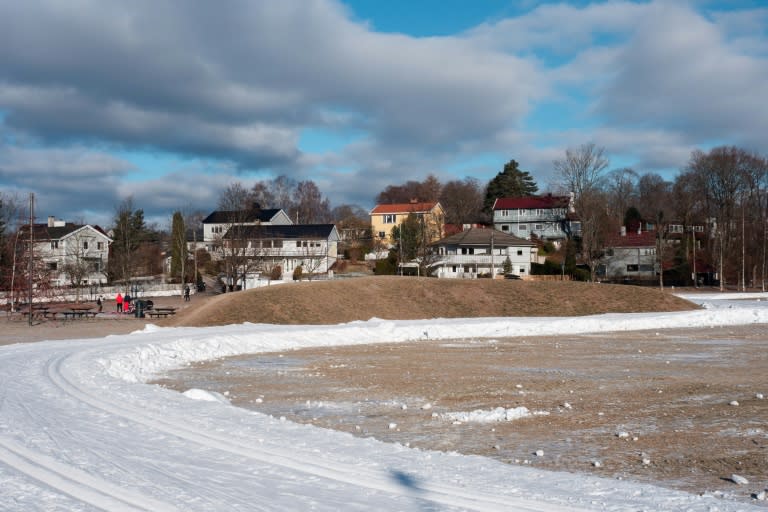Norwegians, the saying goes, are born with skis on their feet. But with the lack of snow and the pandemic this year making many desperate, the authorities are bringing snow and ski slopes to the center of Oslo.
In the past few weeks, large trucks have dumped hundreds of cubic meters of fluffy white material, made by snow cannons perched on hills outside the capital, in the city’s still green parks.
Packaged or prepared with cross-country trails, the parks have become winter wonders for skiing enthusiasts of all ages: young children on excursions with their daycare groups, active seniors and office workers taking a break from their schedule. I work at home .
“For three months, we had very strict corona restrictions in Oslo, but we can still get out,” said councilman Omar Samy Gamal, as a cleaning machine behind him prepares a snowboard hill in Torshovdalen park.
“Since we haven’t had a lot of snow this winter, we are doing what we can to bring it to people. We are taking a little bit of ‘marka’ to them, ”he says.
What is marka?
The word refers to the wooded hills outside Oslo, popular with city dwellers for long walks or, more often, skiing after work or on the weekend.
The first snowfall of the season in early January caused long lines in traffic and, most worrying during the pandemic, overcrowded trains.
“We don’t want people together. We want them to keep their distance from each other, and the best way to ensure that is by taking advantage of local public spaces, ”says Gamal.
Oslo’s four parks – including the one belonging to the royal palace – have already been or will be partially covered with artificial snow to quell the locals’ ski and sled thirst.
“It is extremely important to keep people active without everyone having to take the same train to get out of the city,” says Miriam Heen Skotland, a psychologist who cross-country skied at Voldslokka Park on her lunch break.
– White Christmas? –
Before working the night shift as a nurse, Karen Margrethe Igland also tied up her cross-country skis, just 10 minutes from her home.
“I try to limit the use of public transport. If I want to go to the ‘marka’, I have to take the train. So it’s better to be able to come here on foot, ”she says.
Climate change has made winters shorter in Norway.
According to the Norwegian Meteorological Institute, Oslo has lost 21 winter days in the past 30 years, defined as days when the temperature drops below 0 degrees Celsius.
The city could lose another 26 winter days by 2050, the institute warned.
“When I was young, it was not difficult to predict the weather in winter: it was usually cold and it usually snowed a lot,” said Norwegian Education Minister Guri Melby in January when new climate measures were introduced.
“But for Christmas this year, I wasn’t sure if I should buy a sled for my kids, because winters these days are much milder, with a lot less snowmen and ski days,” she said.
And in an almost sacrilegious action, Norway opened its first indoor ski center in early 2020. However, it is currently closed to the general public because of virus restrictions.
With Oslo fighting its battle with the thermometer, is it really reasonable to transport tons of snow by truck?
The vehicles are powered by biodiesel, with hydrotreated vegetable oil, notes the city hall.
“Using these carbon neutral trucks to bring snow to people so they don’t use their own car to drive to the ‘marka’, I think it’s a very beneficial equation for the climate,” said driver Tom Kjetil Tangen.
phy / po / kjm / qan
